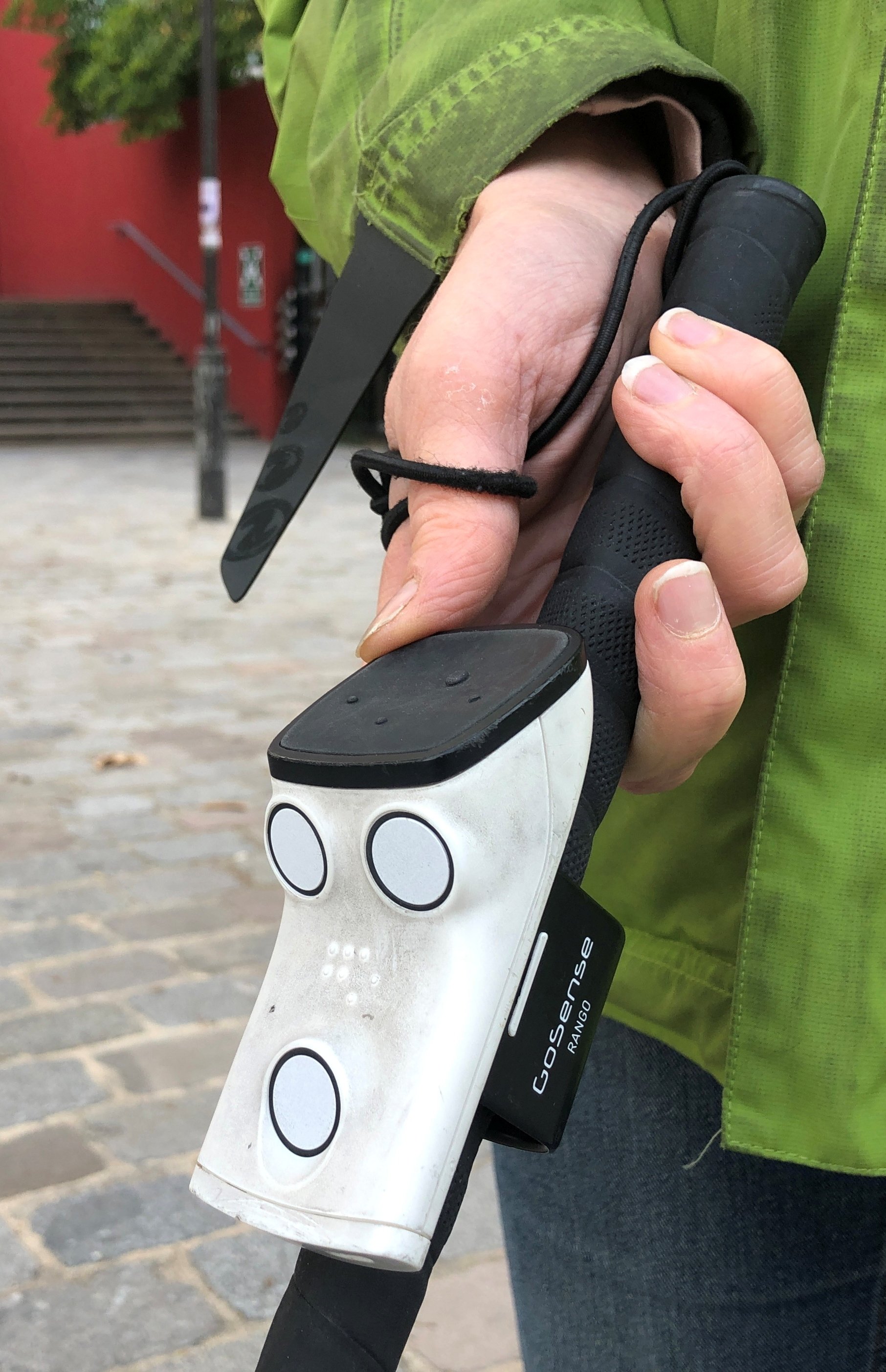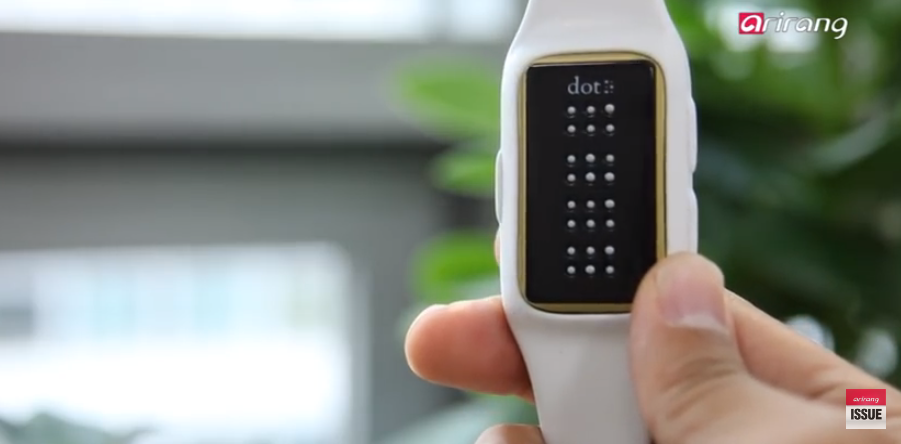OCR Devices for the Blind: Changing Print to Speech in Real-Time
OCR Devices for the Blind: Changing Print to Speech in Real-Time
Blog Article
Discover Cutting-edge Tools Created for the Visually Impaired
The development of innovative devices for the visually impaired stands for a considerable innovation in access and freedom. Technologies such as smart glasses with AI abilities and mobile applications made to provide auditory descriptions are reshaping everyday experiences for customers. Additionally, wearable gadgets that use haptic feedback enhance environmental awareness, while contemporary Braille advancements supply new ways to engage with text. As these tools proceed to advance, their influence on the lives of those with visual problems increases essential inquiries about the future of inclusivity and autonomy in various aspects of life. What lies ahead in this technical landscape?
Smart Glasses for Navigating

Smart glasses made for navigation are revolutionizing the method aesthetically damaged people interact with their environment. These advanced devices utilize a combination of cam modern technology, fabricated knowledge, and auditory responses to provide real-time details concerning environments. By using challenge detection systems, clever glasses can inform individuals to possible threats, allowing more secure mobility in both familiar and strange settings.
The assimilation of GPS modern technology further boosts navigation abilities, enabling individuals to get acoustic instructions as they relocate. This hands-free technique not only fosters self-reliance however also equips visually damaged people to browse urban landscapes with enhanced self-confidence. In addition, several smart glasses are furnished with features that identify spots and road signs, supplying contextual info that boosts the user experience.
Moreover, the growth of these devices is consistently progressing, with companies working to enhance the accuracy of object recognition and broaden the series of navigational features. As clever glasses end up being much more cost effective and available, they hold the potential to considerably change everyday life for aesthetically damaged users. Ultimately, these cutting-edge devices represent a critical step towards inclusivity, offering enhanced wheelchair and a higher feeling of autonomy for individuals browsing the globe around them.

Mobile Apps for Daily Living
Exactly how can mobile applications improve the day-to-days live of visually damaged people? Mobile apps are changing the way aesthetically damaged individuals browse their environments, manage daily tasks, and access info. These applications offer vital assistance with different functionalities, fostering freedom and improving lifestyle.
A number of innovative mobile applications are made particularly for daily living. Applications like Be My Eyes attach aesthetically impaired customers with sighted volunteers through video telephone calls, permitting them to receive real-time assistance with jobs such as reviewing tags or navigating unfamiliar spaces. Seeing AI, created by Microsoft, utilizes artificial knowledge to describe surroundings, reviewed text, and identify objects, properly changing a mobile phone into a powerful device for daily support.
Additionally, navigation apps customized for the aesthetically impaired, such as Aira and BlindSquare, offer audio-based instructions and ecological information, enabling customers to traverse their surroundings safely and with confidence. Beyond navigating and immediate assistance, mobile applications likewise support company and task administration, with attributes that aid individuals establish pointers, develop order of business, and track consultations. In summary, mobile applications work as important resources, encouraging visually damaged individuals to lead even more independent and meeting lives.
Wearable Technologies for Help
Empowerment through modern technology is progressively noticeable in the realm of wearable gadgets designed to assist aesthetically damaged people. These innovative tools incorporate perfectly right into life, enhancing navigating and supplying important responses to users. Wise glasses furnished with electronic cameras can recognize faces and read text aloud, permitting customers to connect even more confidently in social and expert settings.
One more significant advancement is using haptic comments systems in wearable tools. These systems make use of vibrations or other responsive signals to share information regarding the user's environment, such as challenges or adjustments in terrain, boosting movement and safety. Wearable innovations likewise consist of wristbands that connect to smartphones, alerting users to notifications via subtle vibrations, thus boosting connection without reliance on aesthetic cues.
As these innovations remain to progress, they large glasses are not only improving independence for aesthetically impaired individuals but additionally cultivating a higher sense of incorporation in society. By linking the void between challenges faced in day-to-day living and the potential for freedom, wearable technologies offer as pivotal devices in the quest for equal rights and empowerment for those with aesthetic disabilities.
Sound Description Devices
Sound description devices play an important duty in enhancing access for visually impaired people, supplying them with the capacity to involve with visual media. Assistive technology for the blind. These tools supply narrated descriptions of crucial aesthetic aspects in movies, television shows, and live performances, making certain that users can completely understand the context and emotions shared through visuals
Sound description can be incorporated right into various platforms, consisting of streaming solutions, cinema testings, and live movie theater. Lots of popular streaming services now consist of audio review summary as an accessibility function, allowing viewers to select it easily. In enhancement to mainstream media, specialized apps additionally exist, offering audio descriptions for art exhibits, galleries, and various other cultural events.
The efficiency of audio description depends upon the skill of the narrators, who need to convey visual details succinctly without interfering with the original sound. Innovations in this field are additionally paving the means for even more individualized experiences, where customers can adjust the level of detail and pacing according to their preferences.
Braille Innovations and Gadgets
Braille tools and developments have substantially transformed the way aesthetically damaged individuals interact with text and information. Modern developments have led to the advancement of flexible tools that improve literacy and independence among users.
Moreover, portable Braille notetakers incorporate typical Braille input with modern functionalities, helping with note-taking, scheduling, and file editing and enhancing on the go. Smart glasses for the visually impaired. These small devices commonly include text-to-speech capabilities, connecting the gap in between Braille and auditory information
In addition, ingenious Braille printers have arised, allowing customers to create Braille labels, files, and educational products effectively. This ease of access fosters better involvement in educational and specialist settings, inevitably promoting inclusivity.
Additionally, research into clever Braille innovations continues to increase. Instruments that integrate expert system are being discovered to supply real-time navigation help and contextual information, boosting the user experience in varied settings. On the whole, these developments show a dedication to equipping aesthetically impaired people with technology, ensuring they can conveniently accessibility and engage with the more globe around them.

Conclusion
The improvement of ingenious tools for the visually impaired significantly enhances freedom and lifestyle. Smart glasses, mobile applications, wearable modern technologies, audio summary tools, and Braille innovations collectively equip individuals by providing essential navigation assistance, environmental awareness, and boosted analysis experiences. These innovations not only foster better incorporation however also promote freedom in day-to-day activities, inevitably adding to a much more fair and accessible culture for visually impaired individuals. Proceeded advancement in this field holds assurance for more enhancements.
As smart glasses become more obtainable and budget-friendly, they hold the potential to substantially transform everyday life for aesthetically impaired individuals. Mobile applications are transforming the means visually impaired customers navigate their settings, manage everyday jobs, and access info. Apps like Be My Eyes attach visually impaired individuals with sighted volunteers using video telephone calls, permitting them to receive real-time support with jobs such as reviewing tags or navigating unfamiliar areas.In addition, navigation apps tailored for the visually impaired, such as Aira and BlindSquare, provide audio-based instructions and ecological information, allowing users to traverse their surroundings safely and with confidence.The innovation of innovative tools for the visually impaired considerably improves freedom and top quality of life.
Report this page